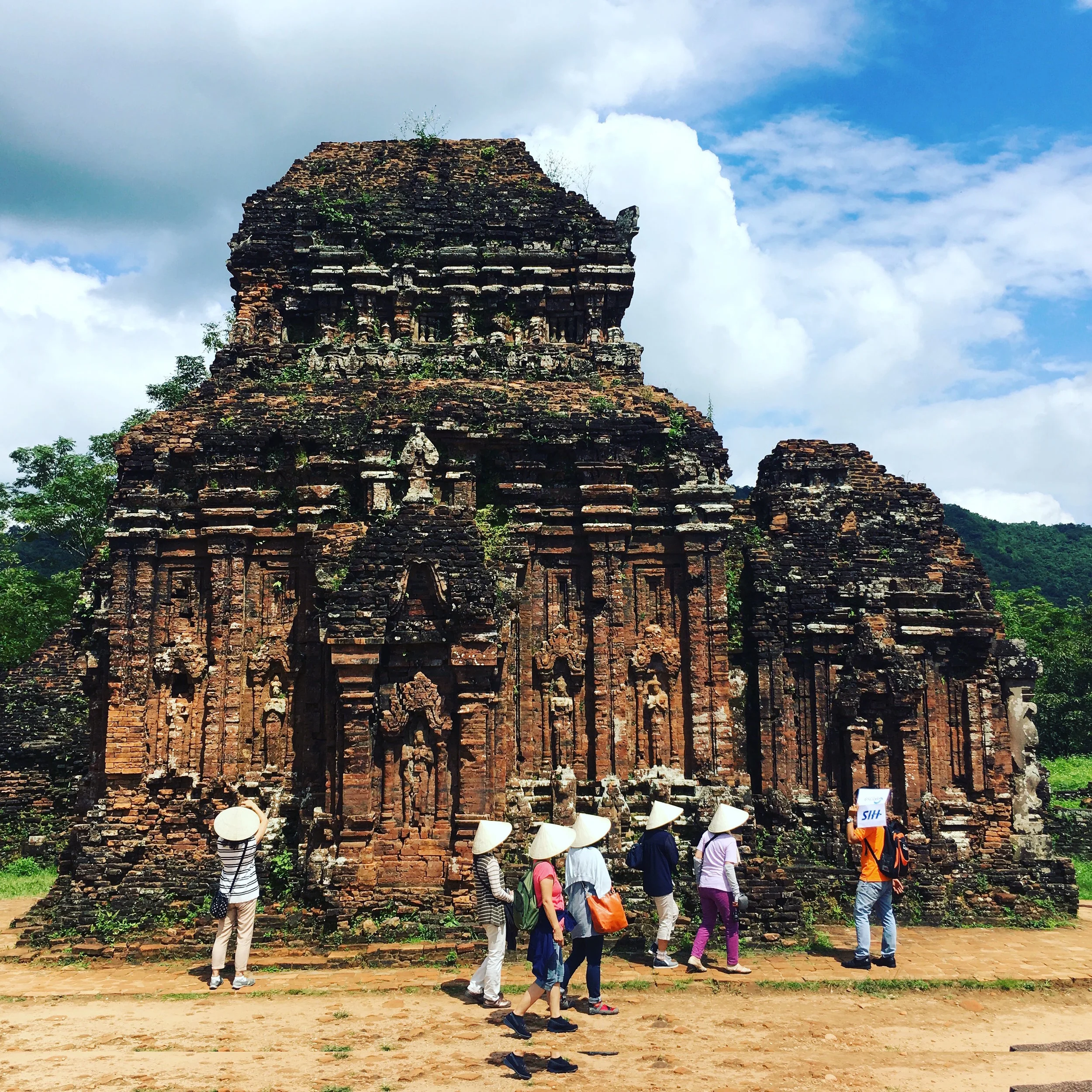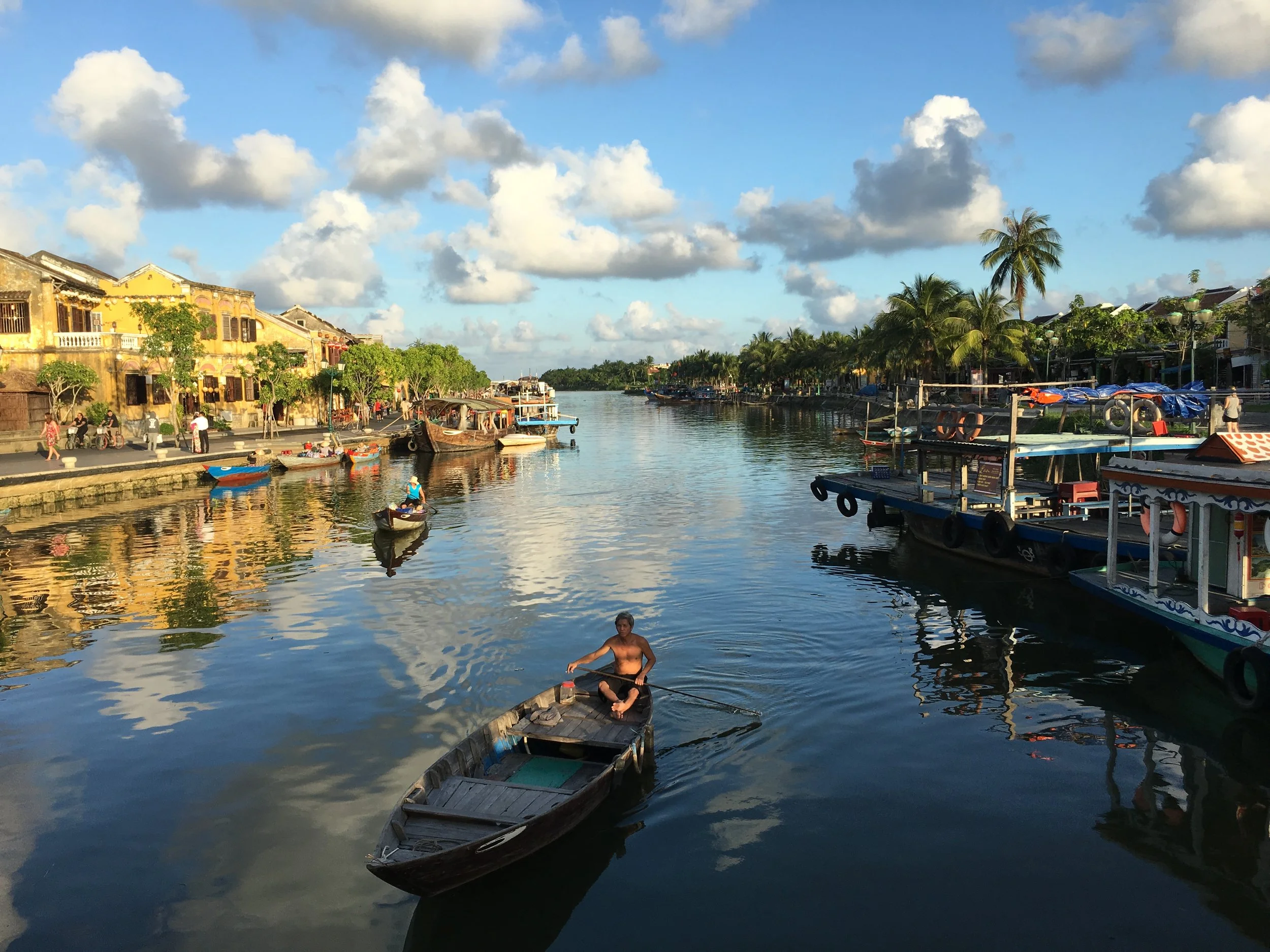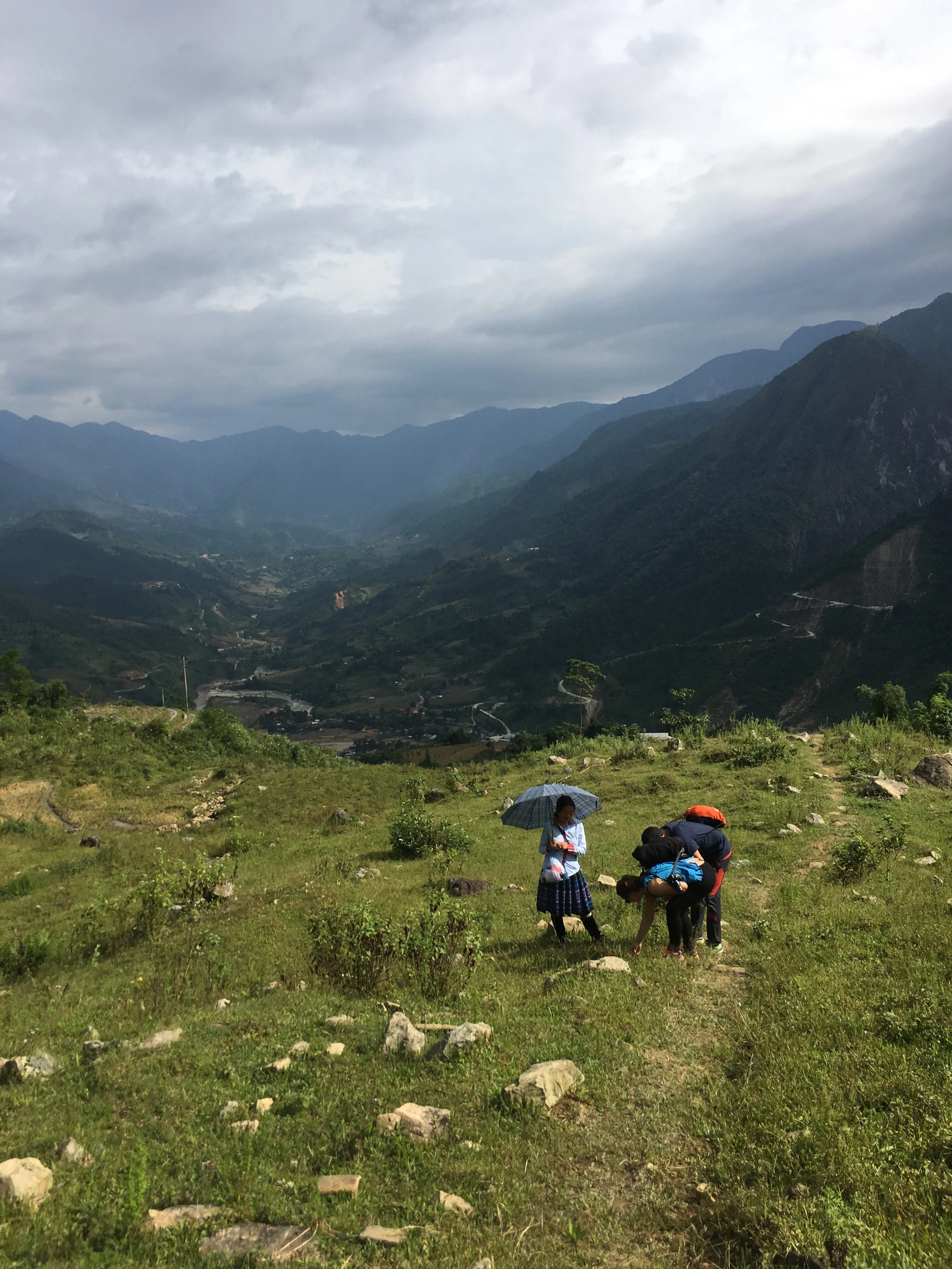Reflecting on Mỹ Sơn
Driving away as fast as he can from the ruins of Mỹ Sơn
Driving away, quickly
from the ruins
no one can punish us
for.
They were ruins, yet
before
we’ll ask ourselves the
same questions
and rest not knowing
– that if knowing –
they’d be different answers.
‘we’ destroyed that place;
more ancient and
yet more long-lasting
than anything ‘our’
country will create.
‘we’ destroyed that place,
yet demand nothing –
as we raise flags of
our own despair and
we wallow in our cheap
trinkets, at odds now
only with how to forget
faster.
Ernest Hemingway, in an interview giving advice to a young writer, said:
“Watch what happens today. If we get into a fish see exactly what it is that everyone does. If you get a kick out of it while he is jumping remember back until you see exactly what the action was that gave you the emotion...Find what gave you the emotion…Then write it down making it clear so the reader will see it too and have the same feeling that you had…”
Standing, when I should have been kneeling, at the ruins of Mỹ Sơn I thought, I apologized, and I wondered. While the guideposts, written in four languages (including English), portray a tame un-condemning tone of “the war” stating “…as a result of the war” rather than “their bombs did this” or, how I felt: “the US’s ignorant disregard…
I stood, knee deep in the ferns, grasses, and the Fever Few; with butterflies, and star-fruit treesstanding by. I listened, and thought of the many perspectives who’ve either imposed their will on this place, or before, saw it as sacred. I thought of the perspectives of the “re-discoverers” and then those of the American war machine; its leaders, soldiers, and even the un-engaged and ignorant American public still is not completely at fault.
I thought about the people who built this place; in its red-clay, built-of-the-earth-yet-made-for-something-eternal majesty. How sacred is the ground and temple I’m now standing upon? It, having been built in the 10th century) standing gleaming-ly until 1969 when mortar, and directives from the Nixon White House ordered helicopters to destroy it with bombs and machine-gun fire. I felt angry, confused, sad, and even regretful. What if Nixon, and the other war-fed leaders of the “American” war had stood where I stand now, and had taken time to think, if even for a moment, of the souls that gave this place life and who were determined to keep it holy and sacred…would that have changed their decision of destructive finality that left in rubble one of the most historic, and archeological sites in South East Asia?
Wandering from Site ‘A’ – the former most-recognizable and best-intact temple of the site, left in ruin as a result of Viet-Cong habitation and American military force’s carpet bombing strategy – we made our way down the hills, over the picturesque streams erupting with life. A soft breeze cut through the stifling humidity, and for a time offered relief, and a change in the direction of our steps, and perhaps of our thoughts.
I shifted to thinking of the serenity of this valley, in site of Cat’s Tooth Mountain, supposing that it was probably that peace, and beauty that brought the Cham people here originally in the 7th and 8th century. They believed it to be a sacred space
Amazing re-conditioning took place following the war in the 70s and 80s, sponsored and executed by a noted Polish Cham historian, and the Vietnamese government. Today, the ruins stand as a testament to the many styles of early architecture in South East Asia and the Indian peninsula. What makes visiting a place like this special, nearly 1,400 years from when some of the now-ruins were built, is how nature has reclaimed some it, and displayed in conjunction an organic mix of human creativity, and the complex forces of nature.
I hoped, as I walked, that those who built this place might extend the type of forgiveness that seems only imaginable. But, as I finished my circle of site ‘A’, taking in the Shiva etchings while bricks and ferns embraced, I figured we could start by simply forgiving ourselves.




